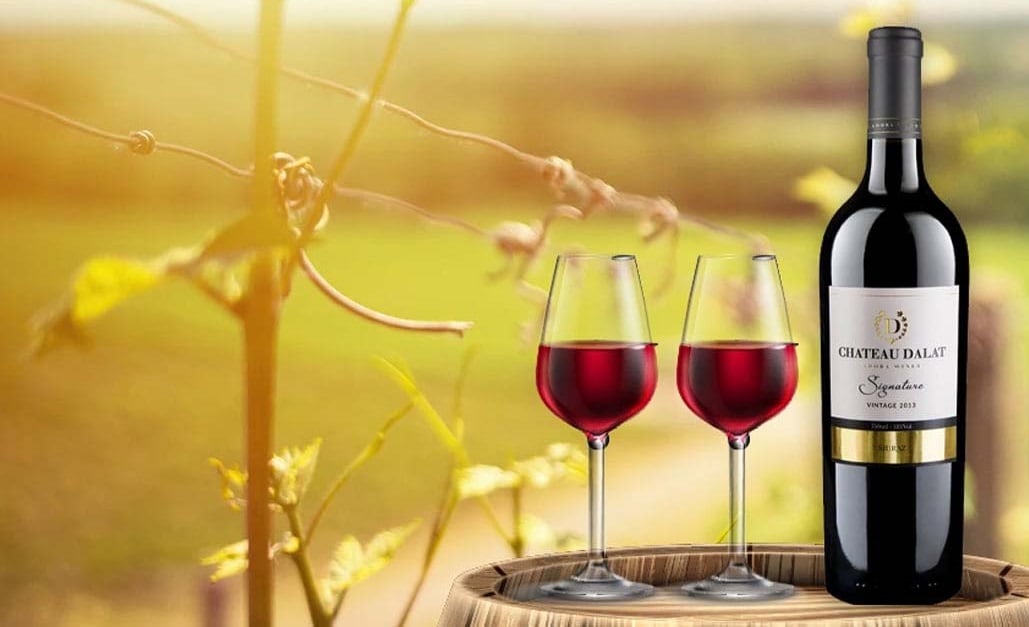
Vietnamese wine, a distinct facet of the country's culinary heritage, unfolds a fascinating tale of flavors and traditions. From the highlands to the coastal regions, Vietnam's vineyards produce wines that encapsulate the essence of the local terrain and the craftsmanship of Vietnamese winemakers. Join us on a Vietnam travel journey to explore the world of Vietnamese wine, where each sip unveils the spirit of a country in its culinary artistry.
1. Overview of wine in Vietnamese culture
Wine has long been woven into the fabric of Vietnamese culture, drawing roots from ancient times with its ties to religious ceremonies and local customs. The diverse range of Vietnamese wine, crafted from an array of ingredients, reflects the rich tapestry of Vietnam's drinking tradition.
Whether it is the Lunar New Year (Tet), weddings, or traditional festivals, alcohol plays a pivotal role in expressing respect and strengthening familial and communal bonds. Additionally, Vietnamese wine is a common element at temples during commemorative ceremonies.
Up in the North, it is customary to pour Vietnamese wine into glasses, ensuring everyone partakes in equal measure. On the flip side, in the southern regions, bowls are the vessels of choice, and the communal “chum” (ceramic wine container) holds the shared liquor. Unlike the North, Southerners have the flexibility to consume varying amounts based on personal preferences.
Furthermore, unique drinking customs prevail in other regions. In specific areas, there's the intriguing “ruou can” drinking culture. This particular type of wine is stored in a “chum,” and bamboo tubes are used like straws to enjoy the beverage. This distinct practice adds an extra layer of cultural richness to the act of drinking Vietnamese wine.
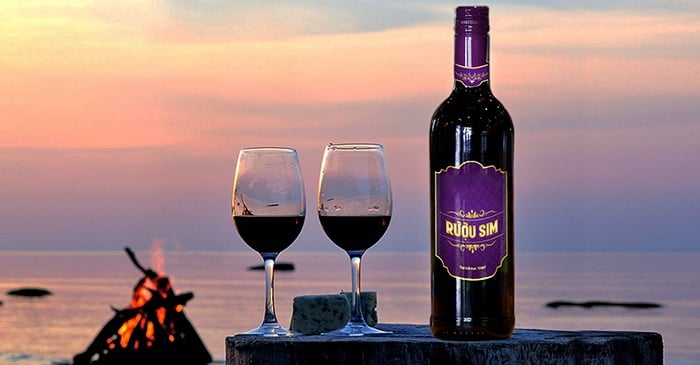
>>> Explore more: Vietnamese desserts: TOP 10 tasty treats to satisfy your sweet tooth
2. The 5 most famous traditional Vietnamese wines
2.1. Vietnamese rice wine
Vietnamese rice wine, or "ruou gao," takes the spotlight as one of the country's most cherished traditional beverages. Distilled from fermented rice, this potent elixir is a household specialty, boasting a clear appearance and an alcohol content surpassing 40%.
The production process varies by region, but typically, it takes 5 to 8 days, and fermentation plays a key role. In the countryside, Vietnamese rice wine is inexpensive and easy to find. In the cities, it is not as popular as beer. Nonetheless, the essence of Vietnamese rice wine remains a treasured tradition deeply embedded in the social fabric of the country.
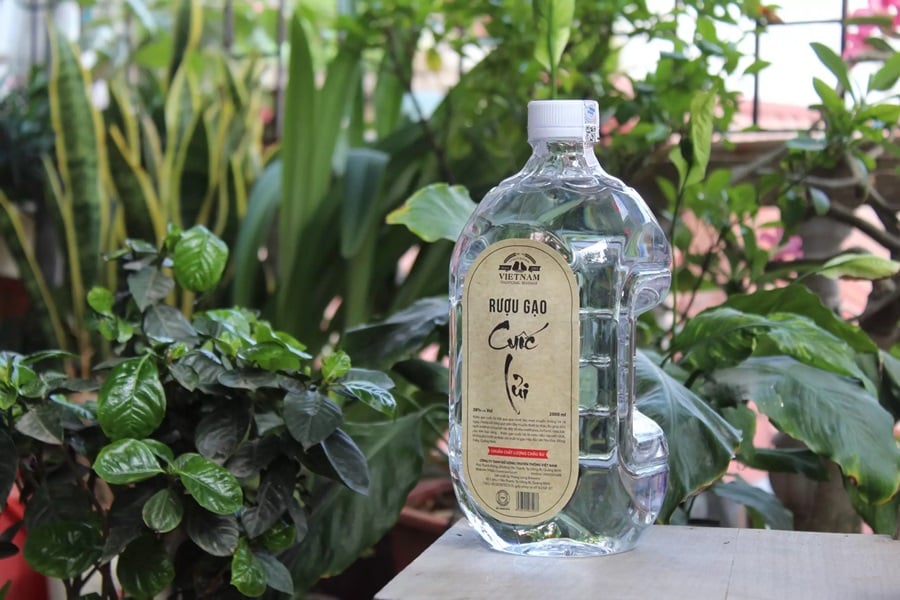
2.2. Vietnamese snake wine
In Vietnam, snake wine is crafted by immersing snakes in pure rice wine, sealed in special glass bottles, and left to age in cellars for a period of five years. This unique concoction results in high-quality tonics that are believed to contain essential substances beneficial for the human body.
The elixir is reputed to moisturize the skin, enhance appetite, and fortify bones, tendons, and muscles. It is commonly used to address general fatigue, combat hair loss, alleviate migraines, etc. Moreover, unlike other tonics, Vietnamese snake wine does not induce symptoms like constipation, excessive thirst, or dryness of the throat and nose.
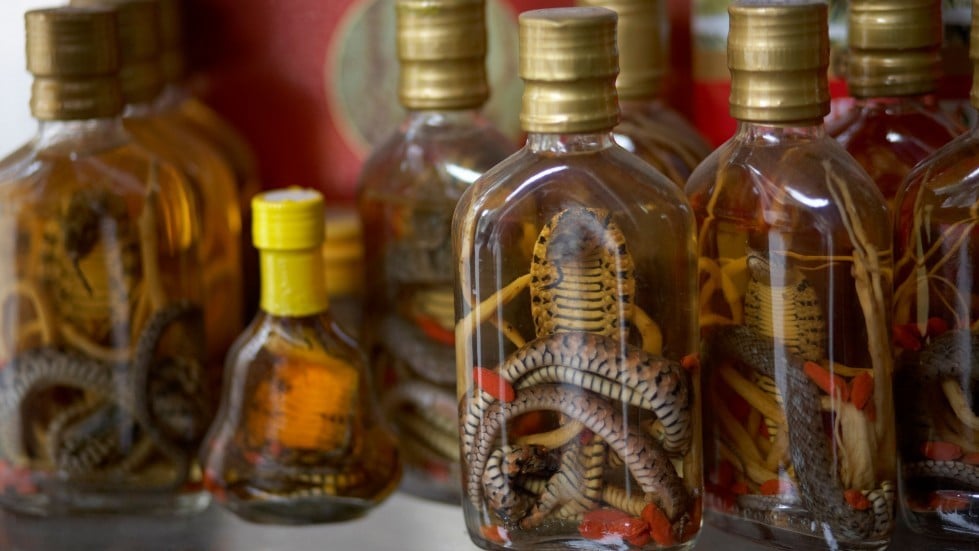
2.3. Vietnamese corn wine
Ruou ngo, a unique Vietnamese wine, is distilled from local corn varieties and holds a special place in the traditions of ethnic minorities, notably the H’mong and Dao people residing in Northern Vietnam.
This clear and aromatic libation boasts a sweet and subtly spicy flavor, making it a distinct choice among traditional spirits. In the everyday lives of local ethnic minorities, Vietnamese corn wine is not just a daily drink but also an indispensable part of every special occasion.
The production of ruou ngo commences with the boiling of corn kernels, followed by fermentation with spring water and yeast, often infused with various herbs and plants. Post-fermentation, the mixture undergoes distillation and may be left to age. The final character of ruou ngo varies, influenced by specific techniques, ingredient choices, and the type of yeast employed.
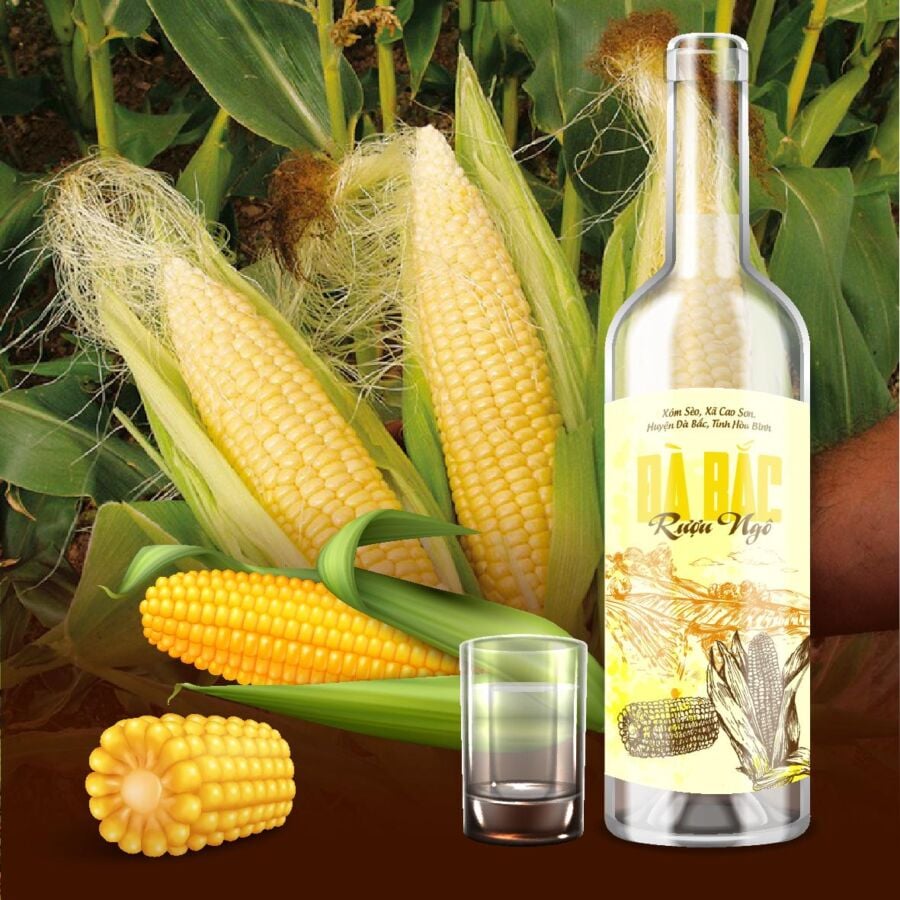
>>> Read further: Vietnamese food souvenirs: Top 20 must-buys for a taste of Vietnam
2.4. Vang Da Lat (Da Lat wine)
Vang Da Lat is a noteworthy product in Vietnam's winemaking landscape, hailing from the picturesque highlands of Da Lat, Vietnam. The cool climate of Da Lat contributes to the cultivation of high-quality grapes, giving the wine a crisp and refreshing taste. Vang Da Lat is also characterized by its well-balanced blend.
This wine has become a symbol of Da Lat's growing reputation in the winemaking industry in Vietnam. Its popularity extends both locally and internationally, with wine enthusiasts appreciating its distinctive qualities. Whether enjoyed on its own or paired with local cuisine, Vang Da Lat encapsulates the essence of Vietnamese viniculture, reflecting the unique terrain and craftsmanship of Da Lat.
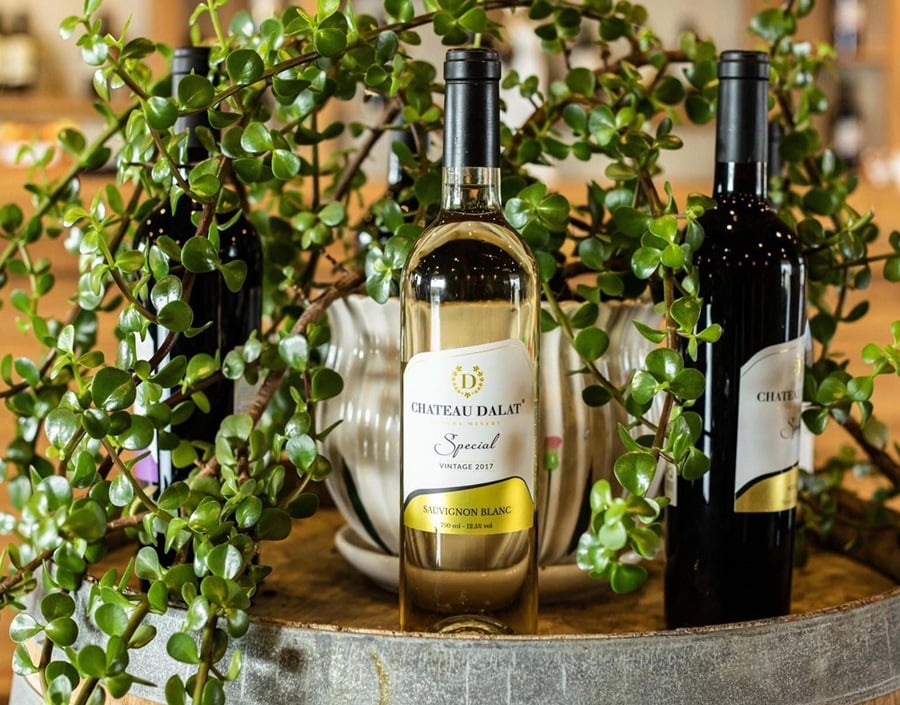
2.5. Can wine
“Ruou can” owes its name to the small bamboo straws used to consume the wine from the jar. Although it belongs to minority groups in highlands and other regions of Vietnam, this Vietnamese wine holds a special place in Vietnamese culture.
The uniqueness of “can” wine lies in the way it is made and served. Local ingredients such as cassava, tapioca, and sweet potatoes are fermented together with wild herbs in a jar for several days. The resulting flavor is remarkably different from traditional rice alcohol, presenting a strong and bitter taste that may induce a delightful dizziness. Its sweetness, however, ensures a gradual state of inebriation.
During special occasions or ceremonies, the wine jar is placed in the center of the communal space. Hosts and guests gather around, and fresh water is delicately poured from a buffalo horn through a small hole. The experience is accompanied by the mesmerizing sounds of gong performances and dances, creating an immersive and vibrant celebration of community spirit and cultural richness.
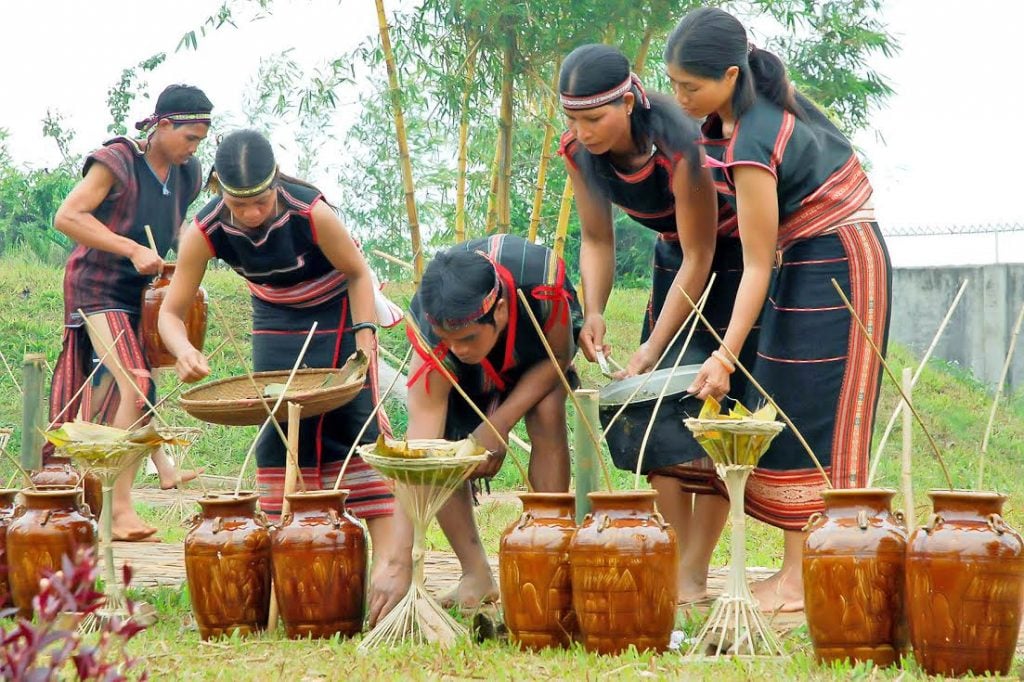
3. Some Vietnamese specialty wines you should try
Besides the above-mentioned signature Vietnamese wines, there are several other Vietnam wine varieties to sample, each boasting unique flavors and aromas.
- Mau Son wine: This is a Lang Son specialty. It strikes a fantastic balance in terms of taste, and it is particularly fragrant. A sip of Mau Son wine will take you to Mau Son Mountain.
- Kim Long wine: Also known as Xika, this Vietnamese wine comes from Kim Long Village in Quang Tri. It has a high alcohol content, often between 45% and 50%, and a rich taste. Vietnam exports this wine to many countries around the world.
- Na Hang wine: This is a type of corn wine from Na Hang District in Tuyen Quang. Its defining quality is an aromatic flavor. Many people choose this Vietnamese wine as a gift for their loved ones.
- Kim Son wine: Kim Song wine is a classic branded wine in Vietnam. It has a high alcohol content and offers a warm, spicy taste. This type of wine is also typically chosen for infused varieties.
- Van Village wine: Van Village Vietnamese wine is a clear wine that is quite popular amongst travelers in the Kinh Bac region. It has a pleasant mellow taste, so it makes for a fantastic gift.
- Phu Quoc Sim wine: This is a Phu Quoc specialty. It tastes sweet and has a strong aroma. Sim wine is believed to offer many health benefits. That being said, it is slightly more expensive than other Vietnamese wine options.
- Bau Da wine: This is a traditional Vietnamese wine that takes about 6 days to make. It has a sweet aroma, and many locals believe that it can relieve back pain and improve the drinker's digestive health.
- Go Den wine: Go Den wine is a famous white wine in Long an. It is made with grown glutinous rice and has a low alcohol content, so it is easy to enjoy even if the drinker is not used to drinking Vietnamese wine.
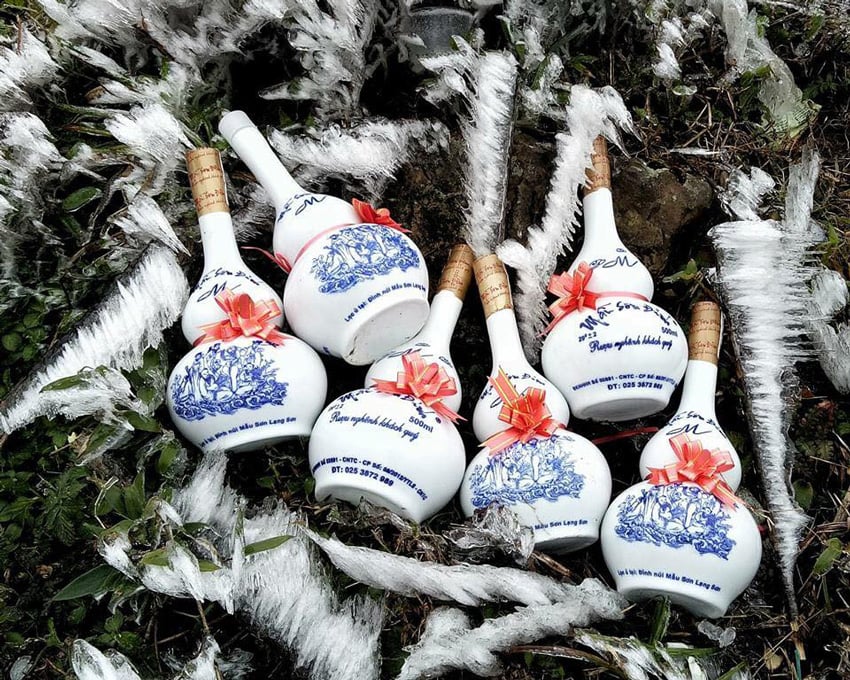
>>> More on: Vietnamese drinks: TOP 22+ local beverages to quench your thirst
In the tapestry of Vietnam's culinary landscape, the exploration of Vietnamese wine unravels a rich and diverse narrative. From the mountainous highlands to the coastal terrains, Vietnamese wines reflect not only the distinct flavors of local terroir but also the cultural richness woven into each bottle. Cheers to the diversity, richness, and enduring spirit of Vietnam's vinicultural journey!
For authentic experiences of Vietnamese wine, why not embark on a trip to Vietnam? Popular destinations are Hanoi, Ho Chi Minh City, Phu Quoc, Nha Trang, Hoi An, and Ha Long. You can stay at Vinpearl hotels and resorts, which promise not only well-equipped rooms and world-class amenities but also exceptional service.

There are swimming pools, spas, gyms, restaurants, bars, etc., for you to avail of. Moreover, from Vinpearl, you can easily pay a visit to VinWonders, Vietnam’s top recreational complex, for diverse entertainment. Go on thrilling rides, watch lively shows, and sample local delicacies to your heart's desire.
>>> Book rooms in Vinpearl Phu Quoc, Vinpearl Nha Trang, Vinpearl Resort & Golf Nam Hoi An, Vinpearl Resort & Spa Ha Long for guaranteed great hospitality!
























